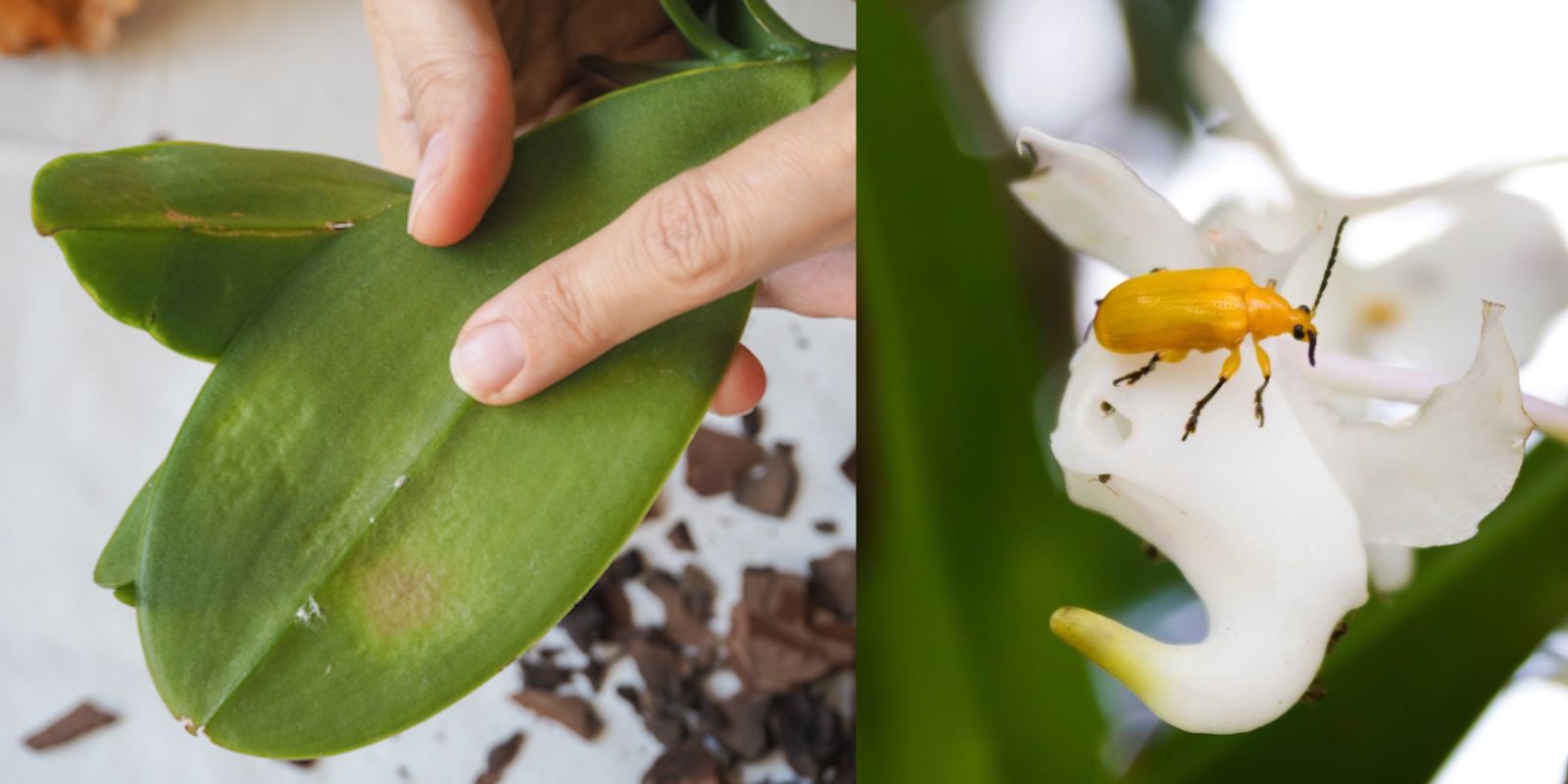Orchids, with their intricate blooms and vibrant colors, are often considered one of the most exquisite plants to grow. However, their beauty can be marred by various pests that pose significant threats to their health and vitality. Understanding these pests and knowing how to combat them effectively is essential for every orchid enthusiast. This comprehensive guide will delve into the top five orchid pests, how to identify them, and practical solutions for keeping them at bay.
1. Aphids: The Sap-Sucking Menace
Identification:
Aphids are small, soft-bodied insects that are often found in clusters on new growth, buds, and undersides of leaves. They vary in color from green to black and are typically less than 1/8 inch long. Aphids feed by piercing plant tissues and sucking out sap, which can cause distorted growth and stunted development.
Control Methods:
- Insecticidal Soap: A commercial insecticidal soap can be effective in killing aphids on contact. Spray the solution generously on affected areas, making sure to cover both the tops and bottoms of leaves.
- Neem Oil: Neem oil acts as a natural insecticide and repellent. Mix according to the manufacturer’s instructions and apply to infested areas. Neem oil also disrupts the life cycle of aphids, preventing future infestations.
- Natural Predators: Introducing ladybugs or lacewings into your garden can help control aphid populations as they are natural predators of these pests.
2. Mealybugs: The Waxy Invaders
Identification:
Mealybugs are small, white, and covered in a waxy substance that makes them look like tiny cotton balls. They often hide in leaf axils, around flower stems, and in the root zone. These pests can cause yellowing of leaves, stunted growth, and even plant death if not controlled.
Control Methods:
- Alcohol Swabs: Dip a cotton swab in isopropyl alcohol and gently rub it on the mealybugs. This will dissolve the waxy coating and kill the bugs. Repeat as necessary.
- Insecticidal Soap or Neem Oil: Both products can be used to treat mealybug infestations. Spray directly onto the bugs and the areas where they are hiding.
- Remove Infested Parts: If the infestation is severe, removing and discarding heavily infested leaves or stems may be necessary to prevent further spread.
3. Spider Mites: The Tiny Arachnids
Identification:
Spider mites are tiny, almost invisible pests that can cause significant damage to orchids. They create fine webbing on the undersides of leaves and cause stippling or discoloration. High temperatures and low humidity levels can exacerbate spider mite problems.
Control Methods:
- Increase Humidity: Spider mites thrive in dry conditions. Increasing humidity around your orchids can help deter them. Use a humidifier or place a tray of water near the plants.
- Water Spray: A strong jet of water can physically remove spider mites from the plant. Make sure to thoroughly spray the undersides of leaves where mites are commonly found.
- Miticide: For severe infestations, a miticide specifically designed to target spider mites may be necessary. Follow the application instructions carefully.
4. Scale Insects: The Hard-Shelled Pests
Identification:
Scale insects appear as small, hard, shell-like formations attached to the plant’s stems and leaves. They can be brown, black, or gray and may be easy to overlook due to their appearance. Scale insects suck plant juices, leading to poor plant growth and can sometimes produce a sticky substance called honeydew.
Control Methods:
- Manual Removal: Use a soft brush or cotton swab dipped in alcohol to gently scrape off scale insects from the plant. This method is labor-intensive but effective.
- Insecticidal Soap: Applying insecticidal soap can help control scale infestations. Ensure thorough coverage, including areas where scales may be hiding.
- Neem Oil: As with other pests, neem oil can be effective against scale insects. Apply it to affected areas and repeat as needed.
5. Thrips: The Tiny, Elongated Pests
Identification:
Thrips are tiny, slender insects that can be difficult to see without magnification. They cause damage by feeding on plant tissues, resulting in speckled or stippled leaves and distorted flowers. They are also known to spread plant viruses.
Control Methods:
- Sticky Traps: Yellow or blue sticky traps can help capture and monitor thrips populations. Place them near the orchids to catch flying adults.
- Neem Oil or Insecticidal Soap: Both neem oil and insecticidal soap can help control thrips. Apply to the affected plant parts and follow up with regular treatments.
- Regular Inspection: Regularly check your orchids for signs of thrips and remove any damaged or infested plant parts.
Preventive Measures and General Care
**1. *Good Orchid Care:* Maintaining optimal growing conditions for your orchids can reduce the likelihood of pest infestations. Ensure proper watering, provide adequate air circulation, and avoid over-fertilization.
**2. *Regular Monitoring:* Inspect your orchids regularly for signs of pests. Early detection and prompt action can prevent severe infestations and damage.
**3. *Sanitation:* Keep your growing area clean and free of plant debris. This helps eliminate potential hiding spots for pests and reduces the risk of infestations.
Conclusion
Maintaining healthy orchids requires vigilance and knowledge about common pests that can threaten their well-being. By understanding the top five orchid pests and implementing effective control methods, you can ensure your orchids remain vibrant and thriving. Regular care, monitoring, and the use of natural or chemical treatments can keep these beautiful plants pest-free and flourishing.
Motivational Sentence
“With these effective pest control strategies, you can keep your orchids looking their best and thriving all year round! 🌸🦠 #OrchidCare #PestControl #GardenTips #HealthyPlants #GreenThumb #OrchidLovers #PlantHealth #InsectControl #FloralBeauty”

